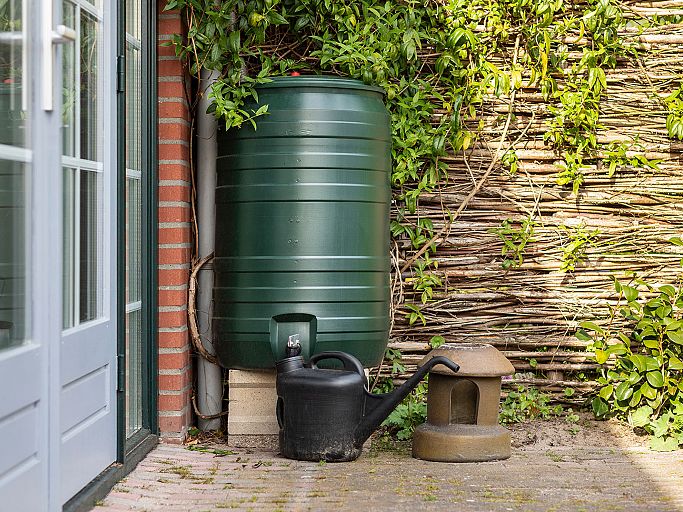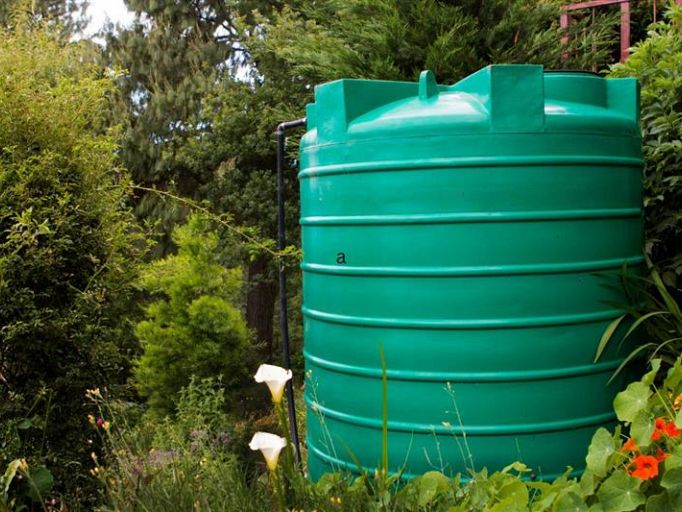- Oil
- Diesel
- Petrol
- AdBlue
- Water
- Sewage
-
Brands
- New Releases
- In Stock
- Sale
- Best Sellers
- Fuel Tank Hire
- More
-
Services
Rainwater Harvesting - How to use Storage Tanks to Save Water
31st October 2024 in water
Author: Jack Dunn
Conservation is becoming an increasing priority worldwide, as the planet wakes up to the precious nature of our natural resources. Rainwater harvesting has emerged as a smart practical effort for individuals, businesses and communities to undertake. By collecting and storing rainwater, then reusing it, the demand on traditional water sources can be reduced. In addition, the beneficial effects of rainwater harvesting include lower utility bills and the support of sustainable infrastructure. For especially safe and effective rainwater harvesting, using storage tanks is essential.
This edition of the Tanks R Us blog explores the benefits of rainwater harvesting, the logistics of storage tanks, and how you can make the most of harvested rainwater for several different purposes.
The benefits of Rainwater Harvesting
- Environmental: Rainwater harvesting is eco-friendly and helps to reduce pressure on fresh water sources ( rivers, lakes and underground aquifers). Harvesting can reduce the need for environmentally taxing water treatment processes, and it can decrease storm water run-off, which often leads to pollution. It reduces soil erosion, promotes groundwater recharge and contributes to an overall healthier environment (especially in urban areas prone to flooding and pollution).
- Infrastructure: Using rainwater harvesting systems at a civic level will help to relieve pressure on local infrastructure. By collecting rainwater directly, businesses and households reduce dependence on water supplies, therefore decreasing overall water demand and freeing up the infrastructure. In addition, large scale rainwater harvesting can prevent drains and sewer systems becoming overwhelmed during heavy rains, so the risk of flooding and sewage overflow is reduced.
- Household: Domestically, rainwater harvesting offers the possibility of lower water bills and a much more environmentally sustainable lifestyle. By using harvested rainwater for things like toilet flushing, gardening and cleaning, households can cut water consumption quite significantly. A private supply can provide security in any areas that are prone to water shortages (or drought), and basic needs can still be met during times when there is limited availability of water. Rainwater is often softer than tap water (due to containing fewer dissolved minerals) so it’s actually more suitable for cleaning purposes, and gentler on appliances.
What Can Harvested Rainwater Be Used For?
Harvested rainwater is versatile as it can be used for a wide range of purposes, particularly for non-potable (ie. non-drinkable) needs.
- Gardening: Plants thrive on rainwater, which is absent of chlorine and other chemicals commonly found in tap water. Rainwater is ideal for maintaining lawns, gardens and indoor plants as well as, on a larger scale, for the irrigation of crops.
- Cleaning: Rainwater is well-suited for cleaning purposes because it’s ‘soft’. It can be used for washing cars, driveways and patios - and even for cleaning household surfaces. It could even be used for washing (laundry), as soft water helps to reduce the amount of detergents required.
- Flushing: By diverting rainwater to toilets, households can reduce their dependence on treated water, lowering utility costs.
- Cooling: In commercial and industrial settings, rainwater can be used for cooling machinery, and for processes that do not require potable water. This will assist businesses by reducing operational costs and lowering environmental impact.
It’s important to note that while rainwater is suitable for many uses, it generally requires filtration and treatment before being used for cooking or as drinking water.
Rainwater storage tanks
Water storage tanks are an essential component of a rainwater harvesting system. They are used as reservoirs to collect and store the water for future use. Tanks come in a variety of materials, shapes and sizes, making it possible to design a customised system to meet specific needs (i.e. whether for an individual household, a larger community organisation or for a business).
Types of rainwater storage tanks
- Plastic: These are among the most popular choices for rainwater storage due to the fact they’re affordable and durable. They’re also lighter in weight when compared to other types of tank, and they’re resistant to rust. This is particularly advantageous in outdoor settings. Plastic tanks are easy to install and maintain, and they can be used above or below ground.
- Steel: Known for being durable and strong, steel tanks are commonly used for larger-scale rainwater harvesting. Galvanised steel tanks, coated to prevent rust, are particularly well-suited to long-term storage and are generally used in areas where high capacities are required.
- Concrete: These are often used for underground storage due to their sturdiness and longevity. They’re highly durable and can store large volumes of water, but they’re typically more expensive and need a much more labour-intensive installation.
- Fibreglass: Lightweight and resistant to corrosion, fibreglass tanks are an excellent choice for areas which suffer from fluctuating weather conditions. They’re often more costly than plastic tanks but are extremely durable and can be used both above and below ground.
For areas which have very distinct wet and dry seasons, storing rainwater during wetter months can make sure of a continuous supply for later use during dryer periods. Therefore, installing larger storage tanks may be advantageous for places where rainfall is inconsistent.
How to Harvest Rainwater Using Storage Tanks
Rainwater harvesting systems can range from simple set-ups to more complex arrangements depending on needs and budget. A standard rainwater harvesting system comprises a catchment area, a conveyance system, a filtration unit and a storage tank. Here’s a basic guide to setting up a system with a storage tank.
- Catchment area: This is, typically, the roof of a building. A larger catchment area can collect more water, so choose a section of the roof with a good surface area and a slope that allows water to flow easily towards the gutters.
- Gutter system: This is responsible for guiding rainwater from the roof to the storage tank. Gutters should be cleaned regularly to prevent leaves, dirt and other debris from entering the system. Leaf guards and gutter screens help reduce build-up.
- First-flush diverter: This is a simple yet effective addition to any rainwater harvesting system. It diverts the initial run-off (which might contain dirt, dust and other pollutants) away from the storage tank. This ensures that only cleaner water enters the tank, and therefore reduces the need for intensive filtration.
- Storage tank location: For maximum efficiency, place your tank close to the downspout where rainwater flows from the roof. This minimises the length of the piping, reducing costs and the potential for leaks. Think about your aesthetic preferences and the amount of available space for a storage tank and decide whether you want it above ground or underground.
- Filtration systems: Integrating a filtration system into your rainwater harvesting set-up is essential if water purity is important (such as for laundry or irrigation purposes). Simple mesh filters can be installed at the inlet to capture the larger particles, and finer filtration systems or UV treatments can be added to purify the water for even more sensitive uses.
- Pumping: If the storage tank is underground, or if water needs to be transported to different parts of a building, a pump will probably be required for effective distribution. Pumps can be either manual or automatic and should be chosen based on the water pressure and volume needed for your specific applications.
Making the most of harvested rainwater
Once your rainwater harvesting system is up and running, making the most of the collected water is important. By incorporating rainwater into your daily routines and landscaping, you’ll see significant benefits in conservation - and cost savings.
- Irrigation: Using harvested rainwater for irrigation is particularly effective during dry seasons. A strategy of drip irrigation systems and soaker hoses works well with rainwater as it delivers directly to plant roots, with minimal wastage.
- Plumbing: Connecting rainwater tanks to non-potable plumbing systems (e.g. for toilets or laundry) can maximise usage and offer savings on utility bills.
- Aesthetic: In some cases, rainwater can be routed to outdoor water features, such as ponds or fountains.
Rainwater harvesting is a very simple yet really powerful way to contribute to conservation, enhance your household or business, and reduce bills. By using tanks to capture and store rainwater, you can create a sustainable and reliable water source for many non-potable needs. With the right set-up from Tanks R Us, and a bit of maintenance, rainwater harvesting with storage tanks offers long term value – to the planet and to your pocket!
One of the largest selections of tanks in the UK
Chat online or call us today on 01469 531229
Related Products
More Articles

Water Storage Tanks and the Environment
1st September 2022 in water

How to Clean a Drinking Water Tank
5th September 2022 in water

Why It's Important To Place Water Tanks In The Right Location
15th November 2022 in water

Can I Drink Water from a Water Storage Tank?
15th November 2022 in water
Help
About Us
My Account
Newsletter Sign Up
Inspiration direct to your inbox, please enter your email below...
Help About Us My Account
© Tanks R Us. All rights reserved. Registered in England. Registration number. 05804332. VAT number 364402764
Designed and produced by Kal Group